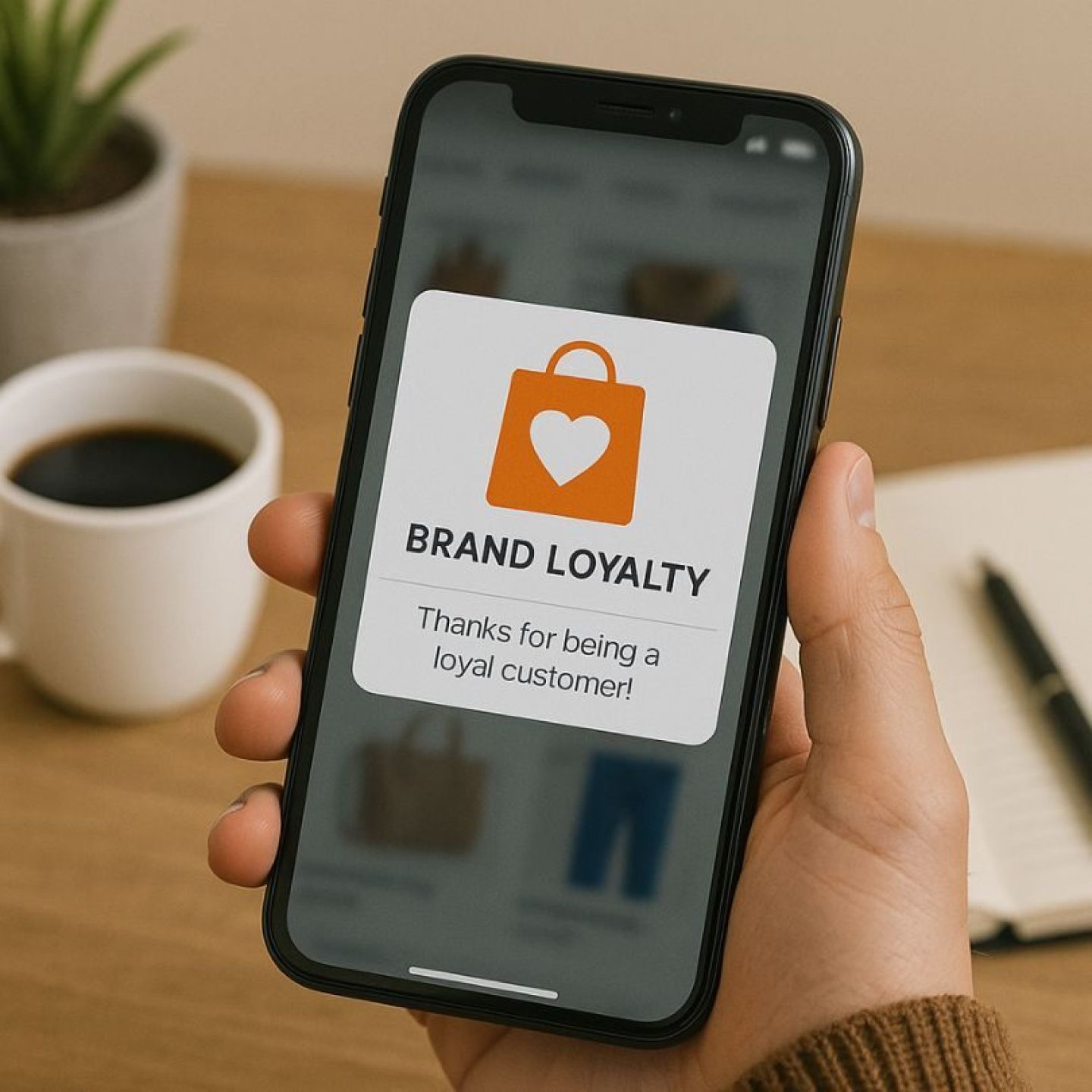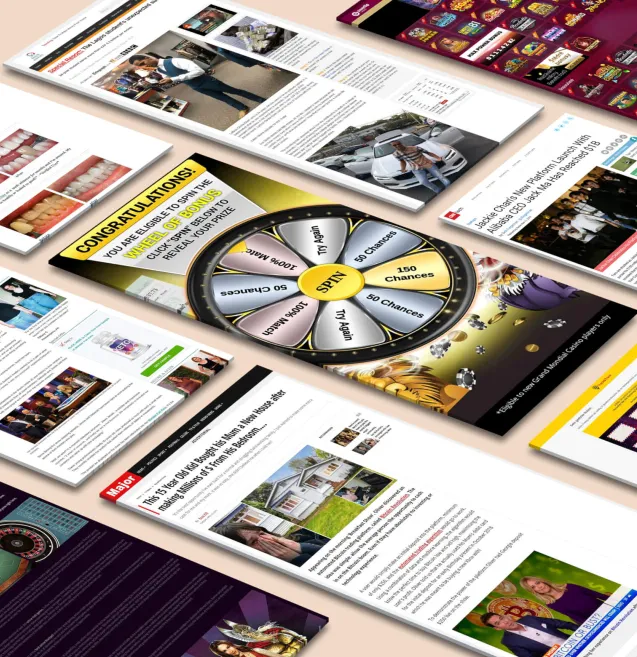
Our spy tools monitor millions of push notification ads from over 90+ countries and thousands of publishers.
Get StartedBrand loyalty is the emotional connection that keeps customers coming back to your business instead of choosing competitors. In today's crowded market, it's much more expensive to acquire a new customer than to keep an existing one. That's why loyalty is not just valuable—it's essential for sustainable growth.
Push notifications have become one of the most direct and effective tools for customer retention marketing. These short messages with images or videos go straight to your customers' devices, creating immediate opportunities to remind them about your brand. Unlike emails that often go unopened in busy inboxes, push notifications grab attention with an average open rate of 90% compared to email's 20%.
In this article, we will explore how to build brand loyalty using sequential push campaigns. This strategic approach involves sending timely and relevant messages based on user behavior and different stages of their journey with your brand. Here's what you'll learn:
Sequential push campaigns are a strategic way to communicate with customers that goes beyond sending one-time messages. Instead of relying on standalone notifications that hope for immediate action, sequential campaigns create a story across multiple interactions. You're essentially having a conversation with your customers instead of just making an announcement.
Think of drip or nurture campaigns via push notifications, like those offered by Anstrex, as your brand's way of guiding customers through a carefully designed journey. Each message builds upon the previous one, creating momentum and deepening the relationship. When you send a welcome notification followed by educational content, then product recommendations, and finally an exclusive offer, you're not just sending four separate messages—you're telling a story that positions your brand as a trusted companion in the customer's experience.
The real power of push ad sequencing strategy lies in its ability to understand user behavior. You can trigger specific messages based on what users actually do (or don't do) with your app or website. For example:
This behavioral targeting transforms generic broadcasts into personalized experiences. You're meeting customers exactly where they are in their journey, delivering value at precisely the right moment.
Push notifications establish direct communication channels that bypass crowded email inboxes and social media algorithms. When you send a push notification, it appears immediately on your customer's device—creating an intimate touchpoint that keeps your brand at the forefront of their attention. This immediacy transforms how you build relationships with your audience.
Timely and relevant messaging drives customer retention in ways traditional marketing channels can't match. You can reach customers at precisely the right moment—when they're most likely to engage. A fitness app sending a motivational push at 6 AM catches users when they're deciding whether to work out. An e-commerce brand notifying customers about a flash sale on items they've browsed creates urgency that converts.
The power of push notification brand loyalty shows up in real-world results. Starbucks uses push notifications to alert customers about new seasonal drinks and personalized rewards, keeping their app engagement rates consistently high. Spotify leverages push to share new releases from artists users follow, strengthening the connection between listeners and the platform. These brands understand that loyalty marketing with push ads isn't about bombarding customers—it's about delivering value consistently.
You create loyalty when customers anticipate your messages because they've learned to trust that each notification brings something worthwhile. That trust compounds over time, transforming casual users into brand advocates.
Incorporating strategies like cross-channel messaging campaigns can further enhance customer activation, monetization, and retention. These campaigns leverage popular app-based channels like push notifications and in-app messaging, as well as companion channels like email, SMS, and in-browser messaging, to build stronger customer loyalty.
Welcome Push Notifications serve as your brand's digital handshake. The moment someone subscribes, you have a narrow window to establish trust and set clear expectations. Your welcome message should:
This first touchpoint shapes how users perceive your entire customer retention push marketing strategy.
Personalization and Segmentation transforms generic broadcasts into conversations. You segment users based on their:
A first-time visitor receives different messages than a repeat customer. Someone who abandoned their cart gets targeted reminders, while loyal customers see VIP offers.
Building Brand Loyalty Through Sequential Push Campaigns requires AI and machine learning tools that analyze behavioral data in real-time, predicting which message resonates with each segment. The technology identifies optimal send times, preferred content types, and messaging frequency for individual users.
Drip Campaign Structure requires careful choreography. Your sequence might start with educational content explaining product features, followed by customer testimonials providing social proof, then limited-time offers creating urgency.
You space messages strategically—perhaps three days apart initially, then weekly—to maintain presence without overwhelming subscribers. Each notification builds on the previous one, guiding users deeper into your brand ecosystem while respecting their attention and inbox.
Customer churn reduction with push notifications starts with identifying who has gone silent. You need to define what "inactive" means for your business—whether it's 14 days without opening the app, 30 days without a purchase, or another metric that signals disengagement. Once you've segmented these users, you can deploy re-engagement campaign strategies that speak directly to their dormancy.
Your first re-engagement message should acknowledge the absence without sounding desperate. A simple "We miss you!" paired with a compelling reason to return works better than generic promotions. Consider offering:
Timing matters immensely in reactivation efforts. Send your first re-engagement push 7-14 days after inactivity begins, followed by a second message 7 days later if there's no response. A third and final attempt at 30 days maintains persistence without crossing into annoyance territory.
E-commerce brands have seen remarkable success with cart abandonment reminders combined with limited-time offers. Fitness apps reactivate users by highlighting missed workout streaks and offering motivational content. Streaming services remind inactive subscribers about newly added content matching their viewing preferences. Each approach personalizes the "come back" message around what originally attracted the customer, creating a bridge back to active engagement.
Rich media push notifications transform standard text alerts into visually compelling experiences that capture attention in crowded notification feeds. You can increase open rates by 25-40% simply by adding images, videos, or GIFs to your push messages. When you send a notification showcasing your product in action through a short video clip or an animated GIF demonstrating a feature, you create immediate visual interest that static text cannot achieve.
The psychology behind emoji use in marketing reveals why these small icons pack such a powerful punch. Emojis trigger emotional responses in the brain's visual processing centers, making your messages feel more human and approachable. You'll notice higher engagement when you strategically place emojis that align with your message tone—a 🎉 for celebrations, a 🔥 for hot deals, or a ⏰ for time-sensitive offers. Data shows that interactive push ads with emoji usage can boost click-through rates by up to 20%.
Best practices for media-rich content in sequential campaigns require careful balance:
Building Brand Loyalty Through Sequential Push Campaigns requires a data-driven approach from day one. You need to establish specific, measurable objectives before launching any push campaign. Are you aiming for a 25% increase in engagement? A 15% boost in conversions? Or perhaps a 30% improvement in 90-day retention rates? These concrete targets shape every aspect of your campaign design.
Push campaign analytics become your roadmap to success. You'll want to track these essential metrics:
Conversion rate tracking in push marketing goes beyond simple percentages. You need to analyze which message sequences drive the highest value actions. I've found that comparing performance across different user segments reveals patterns you'd otherwise miss. Users who receive personalized product recommendations convert at rates 3-5x higher than those receiving generic broadcasts.
The real power emerges when you use these insights to iterate. Test different send times, adjust message frequency based on engagement patterns, and refine your content based on what resonates. Your analytics dashboard should inform weekly optimization decisions, not just quarterly reviews.
Your push notification strategy depends entirely on the audience you've built. Opt-in strategies for push notifications require careful planning because you're asking users to grant permission for direct access to their attention.
The moment users land on your site or app presents your first opportunity. You need to craft permission requests that clearly communicate value. Generic messages like "Allow notifications" fail because they don't answer the user's immediate question: "What's in it for me?"
Increasing subscribers for push marketing starts with timing and context. You should wait until users have experienced some value from your product before requesting permission. A user who just signed up hasn't yet developed trust in your brand. Show them what makes your service valuable first, then explain how notifications will enhance their experience.
Your opt-in prompts should highlight specific benefits:
Quality subscribers matter more than quantity. A smaller list of engaged users who genuinely want your messages will outperform a large list of disinterested subscribers who opted in accidentally or under pressure.
Legal compliance isn't optional. GDPR, CCPA, and other privacy regulations require explicit consent. You must provide clear information about what users are subscribing to and make it easy to unsubscribe. Pre-checked boxes or deceptive language can result in penalties and damage your brand reputation.
Building brand loyalty through sequential push campaigns requires a strategic blend of personalization and automation. You can't rely on generic messages anymore—your customers expect content that speaks directly to their needs, behaviors, and preferences. The tools and techniques we've explored give you everything you need to create customer retention strategies with push notifications that actually work.
The real power comes when you integrate these campaigns into your broader long-term brand loyalty development initiatives. Push notifications shouldn't exist in isolation. They work best alongside your email marketing, social media engagement, and in-app experiences to create a cohesive customer journey.
Start small if you need to. Test your welcome sequences, refine your segmentation, and let the data guide your decisions. The brands that win at customer retention are those that commit to continuous optimization and genuinely value their subscribers' attention. Your push notification strategy can become one of your most powerful loyalty-building assets when you approach it with intention and respect for your audience.
Receive top converting landing pages in your inbox every week from us.
Tips & Tricks
Push notifications can be a powerful tool for driving engagement and conversions during the festive season. Discover practical tips for crafting timely, personalized, and irresistible messages that capture attention instantly. Learn how to balance frequency, tone, and timing to maximize results without overwhelming users. Perfect for marketers ready to make their holiday push campaigns truly impactful.
Liam O’Connor
7 minDec 2, 2025
Must Read
Successful holiday marketing goes beyond a single channel—it’s about creating harmony between Native, Push, and Pop ads. Learn how to integrate these three formats to reach audiences at every stage of the buying journey. Discover strategies for maximizing visibility, engagement, and conversions during the busiest shopping season. A must-read for advertisers aiming to deliver cohesive, high-impact holiday campaigns.
Priya Kapoor
7 minNov 30, 2025
Must Read
This blog uncovers how AI can transform holiday marketing campaigns into high-performing, data-driven successes. It explains how AI tools help optimize targeting, personalize messaging, and predict consumer behavior for better engagement. Readers will learn practical ways to fine-tune their campaigns and boost conversions during the busy holiday season. Ideal for marketers looking to maximize results and efficiency with AI-powered strategies.
Marcus Chen
7 minNov 21, 2025




